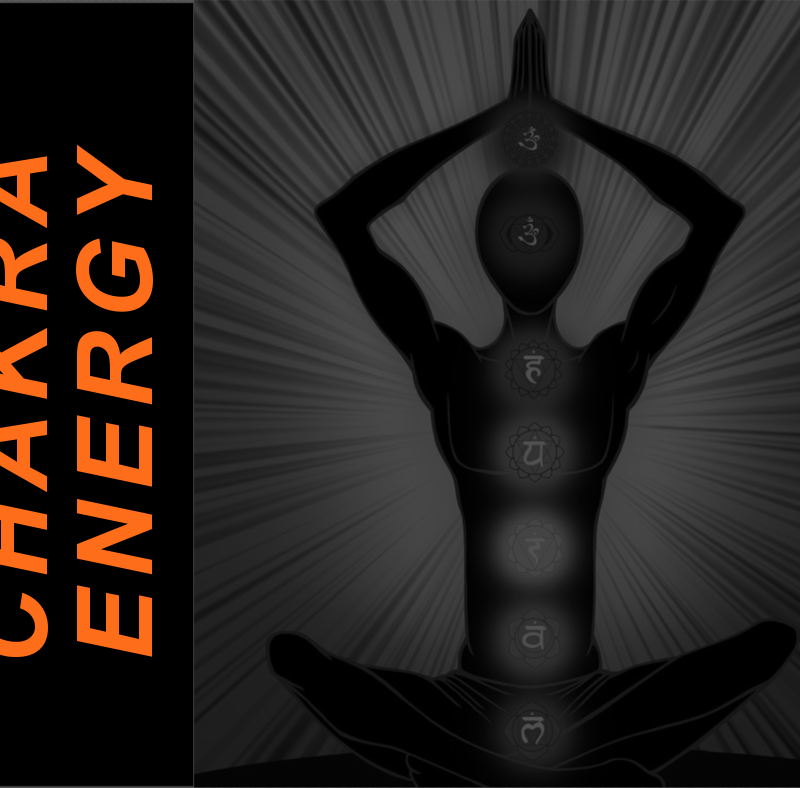
“The best and most beautiful things in the world cannot be seen or even touched – they must be felt with the heart.” ~ Helen Keller
Unlike lean muscle mass and a sculpted body, traditional yoga is rooted in the notion of a subtle energy body that exists within each human being, a part of our constitution that we cannot see or touch. Energy flows through 7 key points in the body, often referred to as vortexes or chakras. Each chakra corresponds to a particular nerve bundle and major organ, extending from the base of the spine to the top of the head.
Areas of Chakra Energy
When the natural flow of energy becomes “blocked” within one of these chakras, it fosters any combination of physical, mental, or emotional imbalances. We may experience feelings such as anxiety, lethargy, or poor digestion.
By learning more about the ancient practices of yoga – breathing, posture, and most importantly, how to tap into our personal chakra centers – we can facilitate the release of this trapped energy, leading to a more balanced, centered internal environment.
Yoga experts pair each energy center with the experience it evokes when flowing smoothly.
Root chakra: sense of security and stability
Located at the base of the spine, the root creates a foundation for living successfully, enabling us to remain grounded and able to handle challenges.
Sacral chakra: relating to emotions
The sacral chakra, just below the navel, helps foster sexual and creative energy.
Solar plexus chakra: confidence and self-esteem
Located close to the stomach, this energy center helps us feel more in control of our lives and our surroundings.
Heart chakra: love and compassion
Residing in the middle of the chest, this chakra holds the key to emotional love and empathy.
Throat chakra: verbal communication skills
This aptly named chakra facilitates our ability to communicate clearly, including voicing opinions with confidence.
Third eye chakra: instincts, intuition, imagination
Lying right between the eyes, this energy vortex reveals our inner beliefs.
Crown chakra: connection to spirituality and the universe
The crown chakra, at the top of the head, holds the power to access a spiritual realm.
Identifying Feelings Associated with Each Chakra
As a yoga medicne therapeutic specialist, Dr. Diane Malaspina prefers to think of chakras as out of balance versus blocked. “There can be a depletion of energy flow, or too much energetic activity in a chakra — each will manifest into different outcomes,” she explains. An overactive chakra may overexert with dominant force, controlling too many aspects of daily life.
“It’s important to pay attention to both the psychological and physiological sensations, because they can inform each other and uncover the root cause of the experience,” explains Guadalupe Terrone, certified yoga teacher and master Reiki healer.
“Personal habits such as poor physical alignment or posture, eating unhealthy food, or self-destructive behavior may cause a chakra to be imbalanced.”
Furthermore, prolonged imbalance may lead to more serious somatic diseases as well as depression and anxiety.
The Unblocking Process
The amount of time required to unblock or rebalance a chakra can vary, depending on how long the blockage existed, or the amount and particular type of healing required to appropriately recalibrate energy flow. Many practitioners of Eastern medicine deem this process just as vital as tending to and maintaining one’s physical wellbeing.
Integrating specific breathing techniques, yoga poses and meditation skills can go a long way towards recalibrating the flow of regional energy.
Below we list some of the more common physical symptoms associated with a blocked crown chakra:
- Tingling Head
- Headaches
- Dizziness
- Changes in Sleep/Food Choices/Overall Lifestyle
- Body Zaps
- Flashes of Light
Some emotional symptoms include:
- Detachment
- Changes in Personal Beliefs
- Anxiety
- Feeling of Connection
Once balanced and/or unblocked, energy moves more freely; individuals often experience profound spiritual symptoms:
- Intuition
- Vivid Dreams
- Manifestation Becomes Easier
- Becoming Directly Connected to the Divine
- Spiritual Visions/Messages
- All Other Chakras Fall into Alignment
With an open crown chakra, we can more easily decipher the source of the problem and, consequently, the optimal path towards reparation.
Mellowing the Emotional Intensity
Spending time in nature, or engaging in yoga, can help guide and redirect energy flow. Experiment with this calming format yourself, or teach it to clients:
- Inhale deeply — exhale slowly — begin to trust the process of universal energy flow.
- Feel the opening of the crown chakra – note a sense of connection with the spiritual universe – communicate with your “higher self”.
- Take a moment to recognize, validate, release. Sense the balance of energy returning as emotional symptoms ease or completely evaporate.
The Emergence of Integrative Medicine
Defined as a marriage of energetic interaction and biological systems, with the goal of maintaining/restoring homeostasis, many liken integrative medicine to the art of Qigong. This ancient Asian practice embodies a holistic method for healing the body and mind, while simultaneously creating a serene spiritual inner sanctum. Integrative medicine too strives to address the entirety of one’s being, including all aspects of one’s lifestyle.
As we often remind our clients, stress plays a key role in a multitude of physical ailments. This lends credence to the area of study known as PNI, or psychoneuroimmunology, which addresses the interactions of stress with the endocrine, nervous and immune systems in the human body.
Blending Eastern and Western Beliefs
As Western medicinal practices begin to embrace traditional Eastern philosophies, progressive professionals now think of chakras as paralleling both spiritual and psychological development. Perhaps the basic tenets aligned with each chakra, and the emotional/physical ramifications thereof, act as mirrors of the human mind/heart, further fusing emotional, physical and spiritual health.
Acknowledging the dynamic aspect of health (balancing homeostasis in response to internal and external cues) strengthens the notion that energy can facilitate healing.
References:
www.yogajournal.com/practice/yoga-sequences-level/beginners-guide-chakras/
www.ncbi.nlm.nih.gov/pmc/articles/PMC6396053/
pubmed.ncbi.nlm.nih.gov/15025881/
www.ncbi.nlm.nih.gov/pmc/articles/PMC1142191/
pubmed.ncbi.nlm.nih.gov/11246939/
pubmed.ncbi.nlm.nih.gov/24271221/
subconsciousservant.com/crown-chakra-opening-symptoms/
www.healthline.com/health/what-are-chakras
www.mind-energy.net/archives/297-yan-xin-qigong.html
integrativemedicine.arizona.edu/about/definition.html
www.ncbi.nlm.nih.gov/pmc/articles/PMC2952118/








